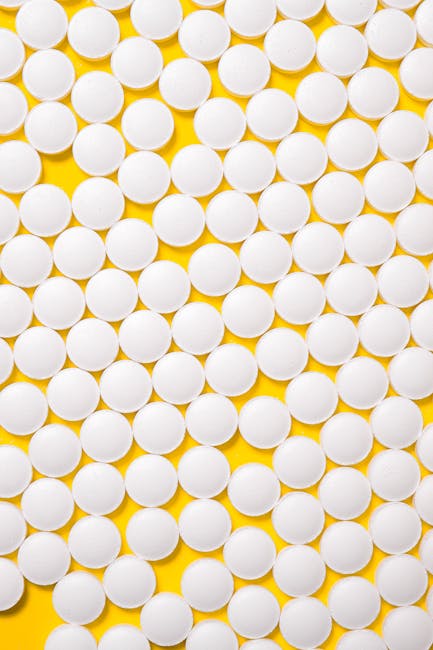
Of course. Here is a detailed, fluent, and well-structured article on the difference between brand-name and generic medicines.
How to Understand the Difference Between Brand and Generic Medicines
In the vast and complex world of modern healthcare, few topics are as universally encountered yet widely misunderstood as the distinction between brand-name and generic medicines. We stand in pharmacy aisles, prescription in hand, and are often presented with a choice: the familiar, often higher-priced brand-name drug we see advertised on television, or a more affordable, less familiar generic alternative. This decision can feel weighty, clouded by questions of safety, efficacy, and value. To navigate this choice with confidence, it is essential to peel back the layers of marketing, regulation, and science to understand what truly separates these two categories of medication—and, more importantly, what profoundly connects them.
At its most fundamental level, the difference begins not in a laboratory, but in the realm of intellectual property and economics. A brand-name drug (also known as an innovator or reference-listed drug) is the original product first developed by a pharmaceutical company. Its journey is one of immense investment, spanning over a decade and often costing billions of dollars. This journey begins with basic research to identify a promising chemical compound, followed by extensive pre-clinical testing and a rigorous, multi-phase clinical trial process to demonstrate its safety and efficacy for human use. The company that undertakes this monumental effort is granted a patent, a temporary monopoly (typically lasting 20 years from filing) that allows it to exclusively market and sell the drug to recoup its investment and fund future research.
Once this patent expires, other pharmaceutical manufacturers are permitted to produce and sell their own versions of the drug. These are generic medicines. A generic drug is officially defined as a pharmaceutical product that is comparable to a brand-name product in dosage form, strength, route of administration, quality, performance characteristics, and intended use. The key word here is “comparable.” It is not an identical copy in every single ingredient, but it is a therapeutic equivalent.
This is where the most crucial point of understanding lies: the active pharmaceutical ingredient (API). The API is the specific chemical substance in a medicine that produces the intended therapeutic effect. For example, in the well-known brand-name drug Lipitor (used to lower cholesterol), the API is atorvastatin calcium. When its patent expired, generic versions entered the market, all containing the identical active ingredient: atorvastatin calcium. The generic must contain the same API in the same amount and must be proven to deliver that API into the patient’s bloodstream at the same rate and to the same extent as the brand-name drug.
If the active ingredient is the same, what, then, are the actual differences? They lie in the peripherals, known collectively as excipients—the inactive ingredients. These include fillers (like lactose or cellulose), binders, coatings, flavorings, and coloring agents. A brand-name drug might have a specific patented coating that makes it easier to swallow or a unique flavor profile for a liquid suspension. A generic manufacturer will use its own combination of approved, safe excipients. For the vast majority of patients, these differences are inconsequential. However, in very rare cases, an individual might have an allergy or sensitivity to a specific inactive ingredient (e.g., a particular dye or preservative) used in one version but not another.
Given that generics are developed without the astronomical costs of initial research and clinical trials, their path to market is significantly shorter and less expensive. Instead of repeating long-term studies on thousands of patients, generic manufacturers must primarily prove bioequivalence to the regulatory body, such as the U.S. Food and Drug Administration (FDA) or the European Medicines Agency (EMA). A bioequivalence study is a tightly controlled clinical trial where a group of healthy volunteers receives both the brand-name drug and the proposed generic product. Blood samples are taken over time to measure the concentration of the drug. If the results show that the generic version delivers the same level of active ingredient into the bloodstream within a strict, predefined margin (typically 80% to 125% of the brand-name drug’s absorption), it is approved. This rigorous process ensures that the generic will have the same clinical effect and safety profile.
This leads to the most persistent myth about generic medicines: the belief that they are “inferior” or “less effective” than their brand-name counterparts. This perception is not supported by scientific evidence. Regulatory agencies around the world enforce stringent standards for quality, purity, strength, and stability. A generic drug manufacturing facility is subject to the same exacting inspections as a brand-name facility. The notion that a generic is a “second-class” drug is a misconception often unconsciously reinforced by the powerful branding and marketing of pharmaceutical companies, which build trust and recognition around a specific name and appearance.
However, the experience of taking a medication is not purely biological; it is also psychological. The “nocebo effect”—where negative expectations about a treatment lead to a perceived worsening of symptoms—can play a role. A patient who is switched to a generic and is apprehensive about it may unconsciously attribute any minor, unrelated ailment or a difference in pill appearance to the new medication. This is a real experience for the patient, but its origin is psychological rather than pharmacological.
So, when might a brand-name drug be necessary or preferred? There are a few specific scenarios:
- Narrow Therapeutic Index (NTI) Drugs: For certain medications where a tiny difference in blood concentration can have significant consequences (e.g., warfarin, levothyroxine, some anti-seizure drugs), some clinicians may prefer to keep a patient on a consistent product (brand or a specific generic manufacturer) to minimize any variability, however small.
- Complex Formulations: Some modern drugs, like biologics (which are made from living organisms), are incredibly complex. Their “generics” are called biosimilars and, while highly regulated, the process of replicating them is more complex than for simple chemical compounds. The decision to switch is often made more carefully by a physician.
- Patient Preference and Consistency: Some patients simply feel more confident and adherent with the product they know best.
In conclusion, understanding the difference between brand and generic medicines is to understand a balance between innovation and accessibility. Brand-name drugs represent the pioneering spirit of medical science, driving breakthroughs that save and improve lives. Generic medicines represent the democratization of those breakthroughs, making essential treatments affordable and accessible to millions more people around the globe. They are two sides of the same coin, bound together by a shared active ingredient and unwavering regulatory standards for safety and efficacy.
The next time you are offered a generic, you can be assured that you are not receiving a “lesser” medicine. You are receiving the same therapeutic benefit, the product of the same rigorous science, at a fraction of the cost. This understanding empowers us to make informed decisions in partnership with our doctors and pharmacists, ensuring that we receive the best possible care while also fostering a sustainable and equitable healthcare system for all.






